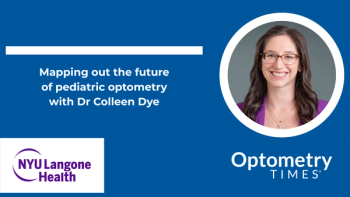Myopia continued to take the spotlight in September with the FDA's marketing authorization of the Essilor Stellest eyeglass lenses for the correction of myopia with or without astigmatism. The lens works to slow the progression of myopia in children aged 6 to 12 years at the initiation of treatment, according to an FDA news release. Learn the latest in our roundup of what to take away from the month of September in terms of drug and technology updates below:
Myopia
US FDA authorizes marketing of Essilor Stellest eyeglass lenses for the correction of myopia
What to know
- The FDA has authorized Essilor Stellest eyeglass lenses for slowing the progression of myopia in children aged 6 to 12 years.
- Previously, only contact lenses for children aged 8 to 12 were approved for slowing myopia.
- No serious adverse events reported; some minor symptoms like blur and halos occurred.
- The lens is sonsidered lower risk than contact lenses.
The FDA had previously granted breakthrough device designation for the lenses on April 30, 2021, which allowed for the expedited development and review of the lens. Now, the lens has been granted marketing authorization through the de novo premarket review pathway to Essilor of America Inc.1
Read more.
Presbyopia
VIZZ now commercially available in the US
What to know
- VIZZ was approved by the FDA in July 2025 for the treatment of presbyopia in adults.
- LENZ Therapeutics began professional sample distribution to eye care providers and plans commercial availability starting October 2025 through ePharmacy and retail by Q4 2025.
- Early feedback from eye care professionals (ECPs) has been positive, suggesting strong market adoption.
- VIZZ offers a non-invasive, drop-based treatment that provides freedom from glasses or contacts for near vision tasks.
Following FDA approval in July 2025, LENZ Therapeutics has announced that VIZZ (aceclidine ophthalmic solution) 1.44% is now commercially available.1 The first and only FDA-approved aceclidine-based eye drop is for the treatment of presbyopia in adults, with its professional product sample distribution having already begun nationally for optometrists and ophthalmologists, according to a news release.
Read more.
AMD
Outlook Therapeutics requests Type A meeting with FDA following second CRL for ONS-5010
What to know
- On August 27, 2025, the FDA issued a CRL for the resubmitted Biologics License Application (BLA) for ONS-5010, citing failure to meet the primary efficacy endpoint in the NORSE EIGHT trial.
- Despite this, the FDA acknowledged positive results from the NORSE TWO pivotal trial, which met both safety and efficacy endpoints.
- Outlook Therapeutics has requested a Type A meeting with the FDA to clarify the confirmatory evidence required to address the CRL’s deficiencies.
- This is the second Type A meeting and second CRL related to ONS-5010.
Outlook Therapeutics has requested a Type A meeting with the FDA after the agency issued a complete response letter (CRL) to its biologics license application (BLA) resubmission for ONS-5010 (bevacizumab-vikg) for the treatment of wet age-related macular degeneration (AMD).1,2
Read more.
Contact lenses
Bausch + Lomb launches ASANA gas-permeable lenses in the US
What to know
- ASANA is Bausch + Lomb’s new comprehensive GP lens portfolio, now available in the United States.
- Designed to address complex vision issues such as:
- Post-surgical vision correction
Bausch + Lomb has officially launched its ASANA gas permeable (GP) lenses in the US, offering eye care providers a “versatile, all-in-one comprehensive GP portfolio featuring spherical, aspheric, toric, multifocal, multifocal toric, reverse geometry, and keratoconic contact lenses,” according to a news release.1
Read more.
Cornea
First patient dosed in Qlaris Bio's phase 2 Nightingale clinical trial for QLS-111
What to know
- First patient dosed in LYNX-3, a pivotal Phase 3 clinical trial evaluating phentolamine ophthalmic solution 0.75%.
- Target population: Adults with chronic night vision impairment (glare, halos, starbursts) after keratorefractive surgery (e.g., LASIK, PRK, SMILE, RK).
- The study is multicenter, randomized, double-masked, and placebo-controlled with a primary end point of proportion of patients achieving a ≥15-letter (≥3-line) gain on mesopic low-contrast visual acuity (mLCVA) chart at Day 15.
- Phentolamine is a non-selective alpha-1 and alpha-2 adrenergic antagonist.
Opus Genetics has dosed the first patient in LYNX-3, its pivotal phase 3 clinical trial of phentolamine ophthalmic solution 0.75% in treating significant, chronic night driving impairment in keratorefractive patients with reduced mesopic vision.
Read more.




















































.png)


